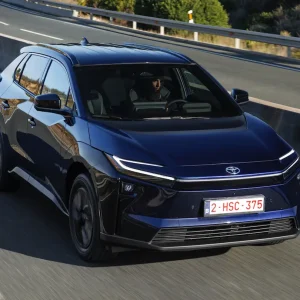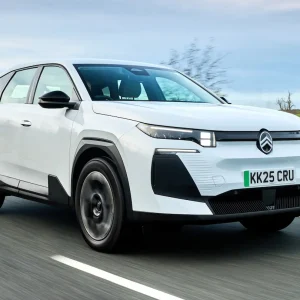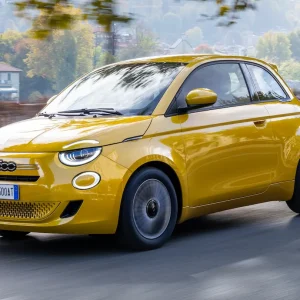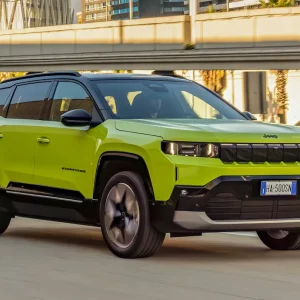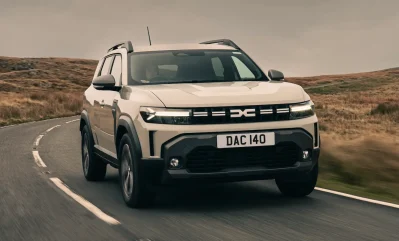
Dacia has sold a massive 2.2 million Dusters since the model’s launch in 2010, mostly attracted by the fact it’s a tough, high-value package. The all-new third-generation Duster is much the same with added ‘want’ factor, so it is a big deal for the Renault-owned brand.
Attractive new look
From the way the new car looks, you can see the growing confidence in the brand. The third-generation Duster demonstrates the new family look – yet couldn’t be mistaken for rivals. Highlights include the vertical face with the distinctive grille and badging, and the wide arches with their chunky plastic trims. The most unusual design features are vertical plastic details on the front door, and the triangular rear lights. To sum up, this Dacia no longer feels like a cheap, last-generation Renault.
The Duster demonstrates clever design with the skid plates which are made of dyed in the mass plastics. Meaning the plastic is already coloured when formed, so any scratches stand a better chance of being hidden – because they won’t alter the original colour. Elsewhere, there’s a focus on recycling, as the underbody protection, and chunky wheelarch guards are made of Starkle, a 20% recycled material with flecks in it.
New platform
On top of the new look, the third-generation Duster gets the newer CMF-B platform that also underpins the latest Renault Clio and Arkana. As a result, Dacia is claiming more space in the same sized footprint, additional safety features (automatic emergency braking, traffic sign recognition, and rear parking assist amongst others). Finally, and most importantly for fleet sales, there is electrification in the form of the Hybrid 140 drivetrain, that debuted last year on the Jogger.
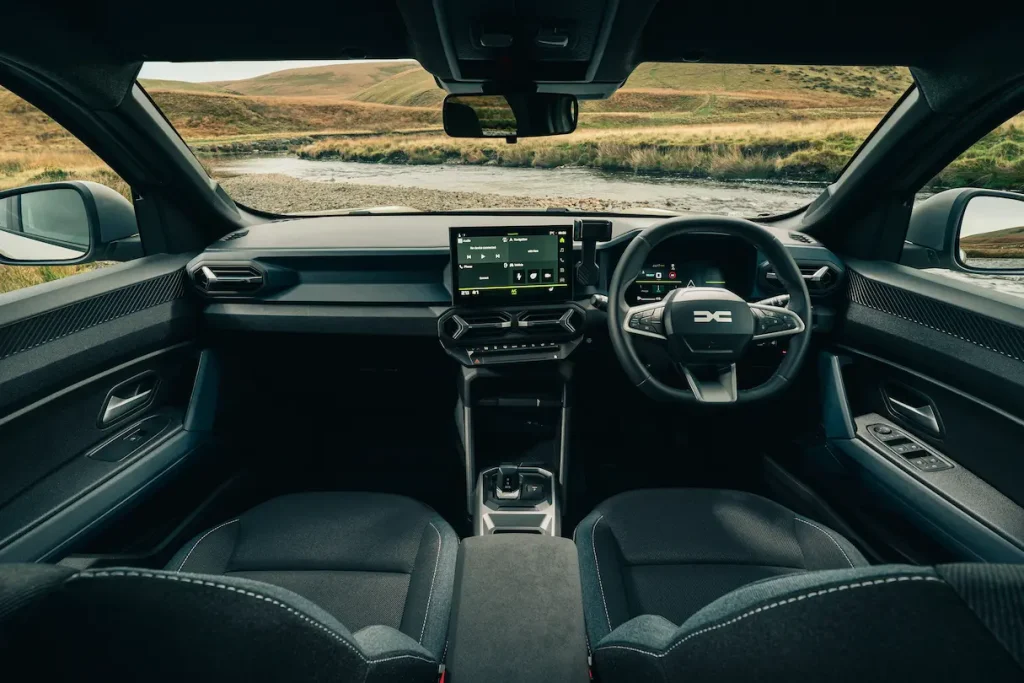
Inside, like the outside, the Duster has its own sense of style – it looks modern and sharp, with different textures and colours in the design. More importantly, the design successfully draws your eyes away from what are still hard and shiny plastics. In the front, the driving position is comfortable – even the tallest will be happy.
The dashboard itself is dominated by the 10.1in central touchscreen, in three forms, depending on spec. Media Nav Live includes a connected navigation system, which is standard on top Journey and Extreme versions.
Space is less impressive in the back of the Duster, but boot space grows to a very practical 430 litres.
On the road, the Duster’s steering lacks feel, but is pleasingly precise. It is a tall car, and there’s some roll in corners, but all offer a soft, comfortable and compliant ride on the 18in wheels we drove.
Performance and drive
The Duster is available with three engines; the 100hp TCe 100 Bi-Fuel, the 130hp TCe 130 available in two- and four-wheel drive, and the 140hp Hybrid 140, which will be the obvious choice for fleet, with its 27% BIK and 114g/km emissions. Other hybrid SUV rivals include the less practical Nissan Juke, which in entry-level Acenta-Premium spec has the same BIK figure (27%), but is considerably more expensive (£29,095), than the most range-topping Duster in Extreme spec. Shared with the Jogger, this engine drives much the same way. When the engine does cut in, at low speeds, it can drone. Then, if you accelerate hard, it gets noisy as the engine works harder.
We also drove the TCe 130 petrol in two-and four-wheel drive form. The engine is willing – but peaky, and the six-speed manual transmission is reasonably slick but doesn’t encourage fast changes. Four-wheel drive Duster versions have built up a solid reputation for their ability, and the new car if anything is even more capable, with more driving modes.
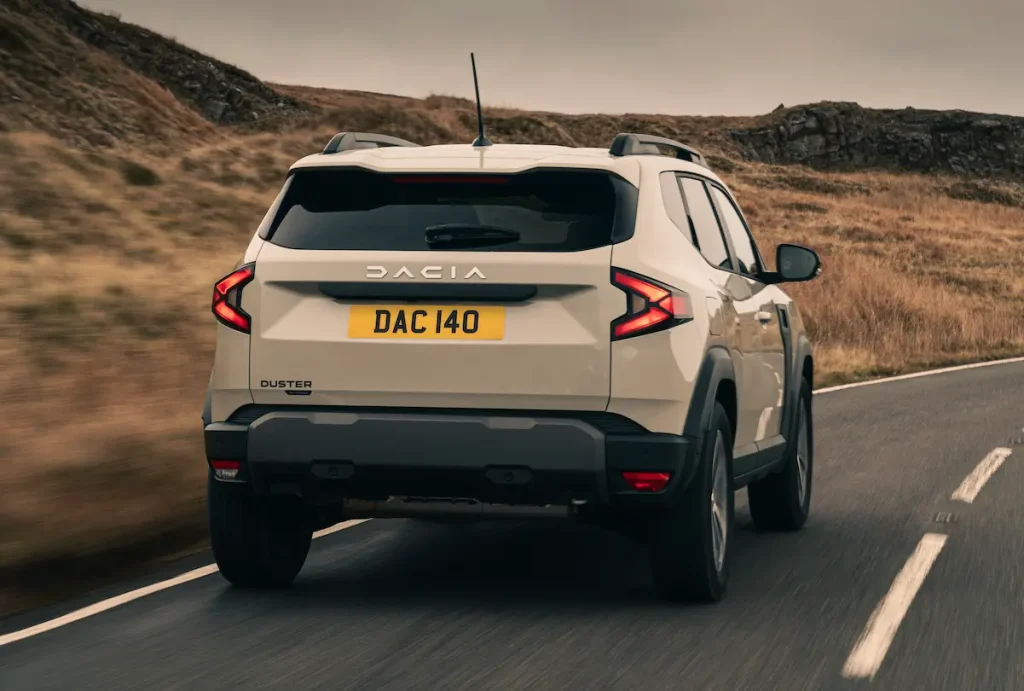
Old Dusters were desirable for their value; the new Duster is a desirable SUV itself. The new Hybrid 140 drivetrain is likely to build on previous sales success, by bringing new conquest fleet customers to a brand they may not have considered before.
Positive: Sharp and attractive exterior and interior design, tidy and comfortable drive, four-wheel drive versions capable off-road, Hybrid 140 model’s efficiency
Negative: Both Hybrid 140 and TCe 130 engines can be noisy, interior plastics still look and feel cheap, tight rear space.
Standard equipment: Media Control infotainment, fixed roof bars, six airbags, rear parking sensors.
| Model | Dacia Duster Journey Hybrid 140 |
| P11D | £25,680 |
| Residual value | TBC |
| Depreciation | £13,975 |
| Fuel | £7,134 |
| Service, maintenance and repair | £2,211 |
| Cost per mile | 38.86p |
| Fuel consumption | 55.39 mpg |
| CO2 (BIK%) | 114g/km (27%) |
| BIK 20/40% a month | £116/£231 |
| Luggage capacity | 430 litres |
| Engine size/power | 1,598cc/140hp |
| Score | 8/10 |

